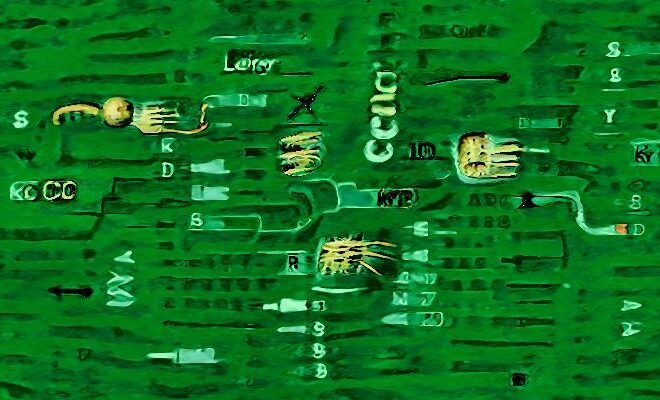3: research entrails
My research includes: animism, migration, borders, boundaries, indigenous perspectives on AI. I ended up coming across projects that were very similar to what I was sketching out or attempted in the past. This was both affirming and dismaying, revealing to me that I don’t fully trust my own initial ideas, abandoning them too easily instead of jumping into making them.
In my “dream review” I returned to the rock chatbot/AI and hole mapping. Perhaps I can successfully address the connection between animism and border crossing through these iterations.
In philosophy and anthropology there is a great revival of interest in animism, its reframing, and decolonizing. Academics are moving away from nature/culture, social/natural divides, and embracing messy boundaries instead. My trail (or entrails, as I feel that I am only getting chunks of these ideas) is outlined here and in notes on mural.
My grounding and inspiration comes from indigenous perspectives where relationality and inclusion of non-human entities is central.
The uses of AI by law enforcement and corporations whose epistemologies are privileged is directly linked to slavery and exclusion. Countering this trend is crucial. Beautiful quote from Making Kinn with the Machines (thanks Christina for sharing this article)
My grandfather, Standing Cloud (Bill Stover), communicates Lakota ethics andontology through speaking about the interiority of stones: “These ancestors that I havein my hand are going to speak through me so that you will understand the things thatthey see happening in this world and the things that they know [. . .] to help allpeople.” Stones are considered ancestors, stones actively speak, stones speakthrough and to humans, stones see and know. Most importantly, stones want to help.The agency of stones connects directly to the question of AI, as AI is formed from notonly code, but from materials of the earth. To remove the concept of AI from itsmateriality is to sever this connection. Forming a relationship to AI, we form arelationship to the mines and the stones. Relations with AI are therefore relations withexploited resources. If we are able to approach this relationship ethically, we mustreconsider the ontological status of each of the parts which contribute to AI, all theway back to the mines from which our technology’s material resources emerge.
Reclaiming Animism by the renowned Isabelle Stengers provides a philosophical framework. It begins by refusing to define animism and rejecting any authority that would allow Stengers to do so. This approach echoes Donna Haraway’s situated knowledge and positional perspectives. Stengers warns that, by defining animism, one submits to the entangled colonialist associations and/or power structures. She quotes Eduardo Viveiros de Castro, ‘anthropology demands a process of the “permanent decolonization of thought.” ‘
This resonated with my own questioning of narratives that shape our relationship to the environment, or objects that are part of the landscape, and how I participate in these “assemblages.”
Below are several key quotes:
Reclaiming animism is not reclaiming the “idea” of animism, even if for people like me it may start with the realization that my experience of writing is an animist experience, attesting to a “more than human” world. It is rather a matter of recovering the capacity to honor experience, any experience we care for, as “not ours” but rather as “animating” us, making us witness to what is not us. Such a recovery, again, is not an idea, but it can be helped (protected from being “demystified” as some fetishistic illusion) by the Deleuzo-Guattarian idea of “assemblage.”
“Magic” is such a word, as we freely speak of the magic of an event, of a landscape, of a musical moment… Protected by the metaphor, we may then express the experience of an agency that does not belong to us even if it includes us, but as lured into feeling. It may be that we need to forfeit this protection in order to heal ourselves of the sad, monotonous little critical voice that whispers that we should not accept being mystified, a voice that relays that of the inquisitors and may become a loud, public cry invoking the frightening possibilities that would follow if we gave up critique, the only defense we have against fanaticism and the rule of illusions.
Can the proposition that magic designates both a craft of assemblages and their particular transformative efficacy help us to reclaim it against both the safety of the metaphoric and the stigma of the supernatural? Can it help us to feel instead that nothing is “natural” in nature? Moreover, can it induce us to consider new transversalities, not reductive ones like this sad term, “natural,” which in fact means “no trespassing: available for scientific explanation only,” or like “the symbolic,” which covers everything else?
Reclaiming animism does not mean, then, that we have ever been animist— nobody has ever been animist because one is never animist “in general,” always in the terms of an assemblage that produces or enhances metamorphic (magic) transformation in our capacity to affect and be affected—that is also to feel, think, and imagine. Animism may, however, be a name for reclaiming these assemblages because it lures us into feeling that their efficacy is not ours to claim. Against the insistent poisoned passion of dismembering and demystifying, it affirms what it is they all require in order not to devour us—that we are not alone in the world.
Related Posts
Leave a Reply Cancel reply
You must be logged in to post a comment.
Kat Sullivan
Adam Colestock
Helen (Chenuan) Wu
Christina Lan
Dorian Janezic
George Faya
Julia Myers
Kelsie Smith
Michael Morran
Po-Wen Shih
Liu Siyan
Fisher Yu
—
Craig Protzel
Christopher Wray
Haoqi Xia
Hayden Carey
Katherine Nicoleta Helén
Maria Maciak
Parisa Shemshaki
Sakar Pudasaini
Skyler Pierce
Steven Doughty
Yiqi Wang
—
Andrew Lazarow
Benoit Belsot
Enrique García Alcalá
Hongyi Zhang
Jay Mollica
Li Shu
Teddy (Jian) Guo
Monika Lin
Wenye Xie
Yiru Lu

